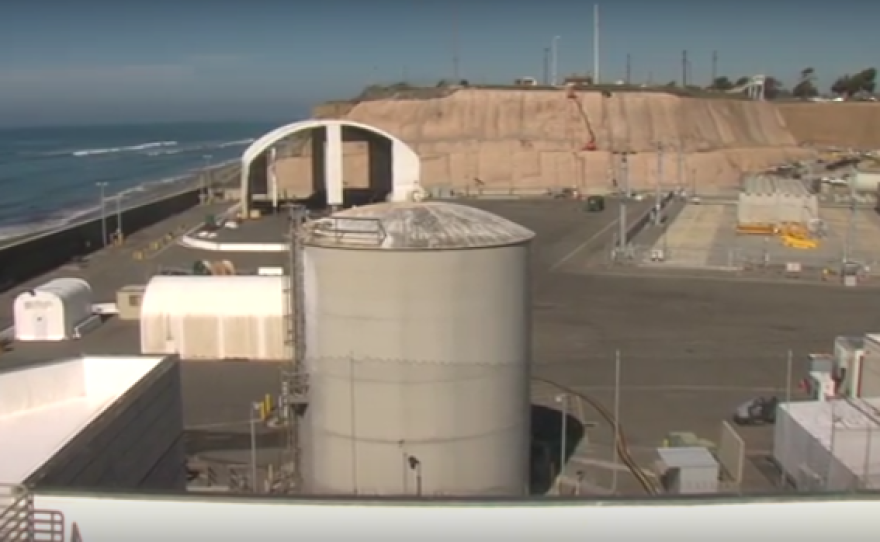The California State Lands Commission held its first public scoping meeting Tuesday to collect comments on what to include in the environmental impact report on the decommissioning plan for the San Onofre Nuclear Generating Station.
In the application from the nuclear plant’s operator, Southern California Edison, the indefinite storage of radioactive waste 100 feet from the beach will not be part of the initial report.
The State Lands Commission is the lead agency responsible for deciding on the scope of the report, which may be approved or rejected by commissioners late next year.
Edison’s proposal is to divide the EIR into phases, the first of which would include decontamination, dismantling, partial site restoration and dealing with the offshore pipes used for cooling the plant.
Ray Lutz of the group Citizens Oversight, asked State Lands Commission staff to include in the report the storage containers to be built on site for tons of spent nuclear fuel.
“It’s just in a really bad spot,” Lutz said. “And now we find out that that isn’t even part of the review of this project.”
Tons of nuclear waste are already stored on site. Edison is planning a new series of concrete casks to be built next to the sea wall between the plant and the beach. They will be loaded with the remaining spent nuclear fuel, starting next year.
“What they’ve done is, they’ve craftily removed their nuclear waste storage from their review,” Lutz said.
California CEQA, federal NEPA
Tom Palmisano, Edison’s chief nuclear officer, said the federal Nuclear Regulatory Commission has already approved the license for the new Holtec storage system being installed.
The NRC concluded in 2014 that spent nuclear fuel can be safely managed in dry casks during short-term (up to 60 years), long-term (100 years after the initial 60 years), and indefinite timeframes.
California's Environmental Protection Act was addressed by the California Coastal Commission, Palmisano said, when it granted a permit for the new storage last year.
“I think they did a very thorough job, made an appropriate decision,” he said. “So that has already been covered.”
The California Coastal Commission permit lasts until 2035.
According to the project summary submitted to the California State Lands Commission by Edison, Phase 3 of the post-shutdown decommissioning project would include “Independent Spent Fuel Storage Operation and Maintenance,” starting in 2035.
Edison is proposing that the initial EIR cover only the first two phases of the project, leaving the creation of another EIR on events after 2035 to a later date. The decommissioning plan ends with Phase 4 in 2051, which Edison refers to as removing spent fuel storage and “Final Site Restoration.”
When environmental impacts begin and end

Rick Wilson of the Surfrider Foundation said the baseline of the EIR should not be what is on the site now, but rather what was there before the nuclear plant was built.
Cy Oggins, chief of environmental planning and management at the State Lands Commission, said according to California law the baseline of the EIR is the current condition of the site.
Ace Hoffman told commission staff the scope of the EIR is based on the assumption that the waste will be removed by 2051, raising the question of whether the environmental impacts would end there.
Lutz said that is far from a safe assumption.
“I think that once they put in this nuclear waste structure, right there, it’s going to be very, very hard to ever get it out,” he said.







